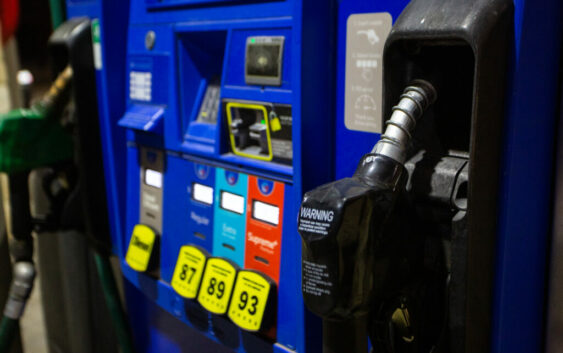- NC Gov. Stein pledges continued Hurricane Helene recovery support in 100-day address
- Austin adopts new map that greatly expands area at risk of wildfire
- CenterPoint Energy accelerates infrastructure improvements ahead of hurricane season
- Carolina Hurricanes playoff tickets go on sale Thursday
- Ask the Meteorologist: Why do tornadoes target Tornado Alley, Dixie Alley?
Gas prices are up slightly after Hurricane Beryl

Cleanup continues in the Houston region after Hurricane Beryl made landfall early last week. CenterPoint Energy, which has been in the hot seat over prolonged power outages, anticipates that as of Monday morning, 90% of customers had their power restored.
Meanwhile, gasoline prices are up nationwide after the storm’s landfall. So how did the Gulf’s energy infrastructure fare during the storm? Matt Smith, energy analyst for Kpler, spoke with the Standard about how the hurricane impacted refining and exports along the Texas coast.
This transcript has been edited lightly for clarity:
Texas Standard: Hurricane Beryl peeled away from Mexico to make landfall close to Houston. How are the different elements of demand and supply affected?
Matt Smith: Well, as you mentioned, the worst-case scenario was for the residents of Houston. There was the widespread power outages there. But in terms of infrastructure, it seems it kind of dodged a bullet.
The storm made landfall in between Corpus Christi and Houston, where there’s a lot of refineries. And we saw minimal impacts there. So that was good. It could have been a lot worse.
While on the import and export side of things, you know, there’s a lot of ports sort of on the western side of Texas that they closed, but then they opened back up as we moved through the week. So really from an energy perspective, it was much less of an impact than it could have been.
So if this wasn’t as bad as it could have been, why did oil prices finish higher last week?
So there was little impact on refining activity. So that means that there was more crude demand, more demand for oil. So that supported that and also meant that gasoline supply remains strong as well because those refineries held up.
We did likely see demand destruction from a gasoline perspective, just because people were staying at home amid power outages. And this is key to bear in mind, that Texas accounts for about 11% of total US gasoline demand.
But as you mentioned yet, the price at the pump now with $3.50 on the national average, Texas is about $3.15. And it is kind of creeping a little bit higher.
» GET MORE NEWS FROM AROUND THE STATE: Sign up for Texas Standard’s weekly newsletters
LNG exports are a huge piece of the puzzle in the U.S. now. Were natural gas prices affected at all?
They weren’t. We saw them come off a bit. And so interestingly, you know, storms entering the Gulf used to be much more supportive for prices because there was a lot of risk of offshore production being shut in.
But now that share is very small, given shale production onshore is so much more prolific.
So the storms tend to have a bearish influence now because A) they could impact export facilities – you know, the U.S. is a huge LNG exporter now, basically one of the world’s leading exporters. And the second piece is when you have a storm come through, it does have that cooling effect. So it means less demand as well. So it’s more bearish than bullish.
So how are things looking on the hurricane front now? I know a lot of people have just been bracing because there was the prediction that this could be the most active hurricane season ever for the Atlantic.
Yeah, that’s right. So fortunately for now, all is quiet on the Western Front. But as you mentioned, this is supposed to be a very active hurricane, and it typically doesn’t ramp up until the second half of August and then peaks in early September. So we’ve still got a long time to go here.
So I know for the average driver, that $3.50 you mentioned the national average of a gallon of unleaded is kind of the bottom line. Are we expecting that to change any time soon, or does it just sort of depend on a bunch of factors, as usual?
It’s primarily driven by the price of oil. And so as we’ve seen oil prices rise in the last week, that will kind of reflect its way through into prices at the pump.
But we should see them staying fairly steady in Texas around that $3.15, $3.20 level.